Snap Lock Plastic Chicken Coop, 15 Chicken Capacity, Large
With its double wall construction and adjustable ventilation, the Snap Lock Large Plastic Chicken Coop is the perfect year round home for your small flock. The plastic chicken coop will not fade or rot and is unaffected by rain, sun, heat, cold or chemicals.
With its double wall construction and adjustable ventilation, the Snap Lock Large Plastic Chicken Coop is the perfect year round home for your small flock. The plastic chicken coop will not fade or rot and is unaffected by rain, sun, heat, cold or chemicals. This chicken coop also comes with removable litter and nesting trays to make cleaning a breeze.
- Snaps together with no tools required for easy set-up
- Easily cleaned with water pressure for convenience
- 1 year warranty on parts
- Made in the USA
- Double wall plastic construction for durability
- Chicken coop with adjustable ventilation for year round use
- Will not fade or rot and is unaffected by rain, sun, heat, cold or chemicals
- Removable litter and nesting trays make cleaning a breeze
- Every access point is lockable for maximum predator-resistance
- Holds 12 to 15 average-sized birds comfortably
Additional information
| Coop/Hutch Type | Standard coops |
|---|---|
| Door Height | 12 in. |
| Door Width | 12 in. |
| Features | UV Resistant, Top Door |
| Primary Finish | Plastic |
| Frame Material | Plastic |
| Location of Doors | Front |
| Nesting Area Length | 12 in. |
| Nesting Area Width | 12 in. |
| Number Of Doors/Openings | 4 |
| Number Of Levels/Stories | 1 |
| Number of Nesting Areas | 4 |
| Number Of Ramps | 0 |
| Number of Roosting Bars | 3 |
| Primary Color | Beige |
| Product Height | 64 in. |
| Product Length | 64 in. |
| Product Weight | 65 lb. |
| Product Width | 42 in. |
| Recommended Number of Animals | 15 |
| Roof Material | Plastic |
| Roof Style | Sloped |
| Wall Material | Plastic |
| Warranty | 1 Year Parts |
| Manufacturer Part Number | COOP33 |

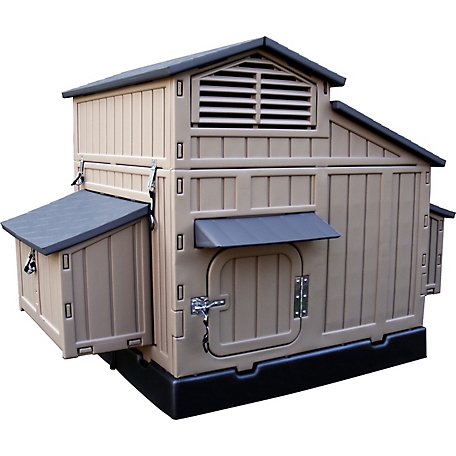
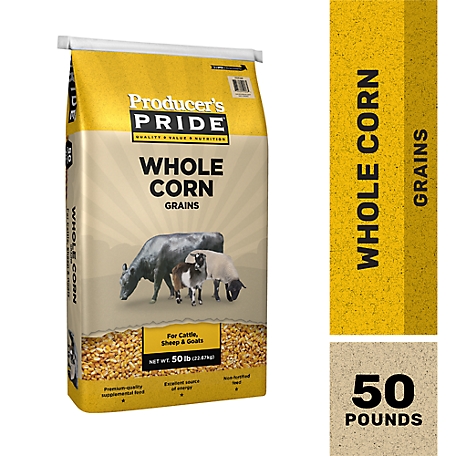
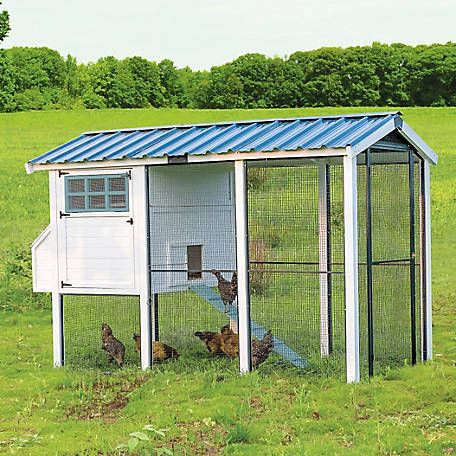
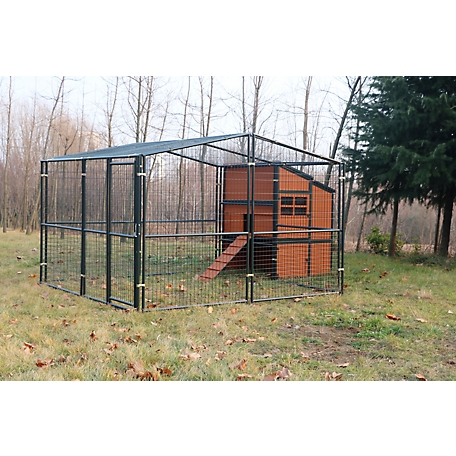
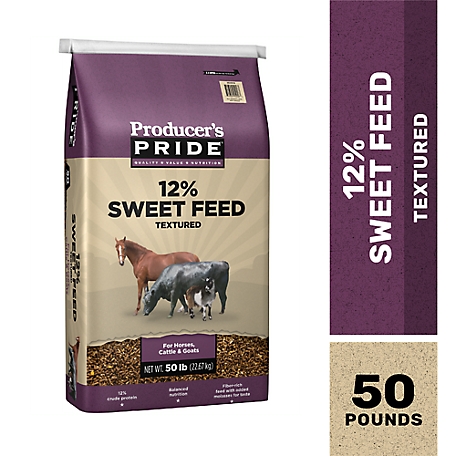
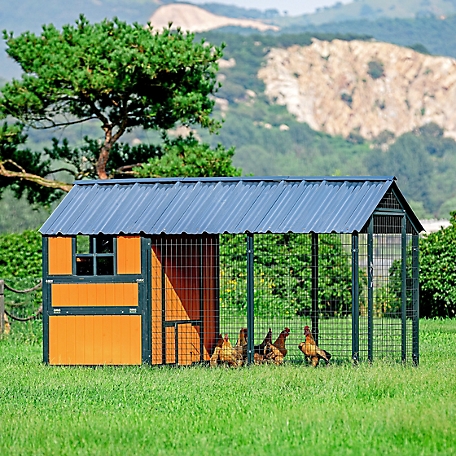

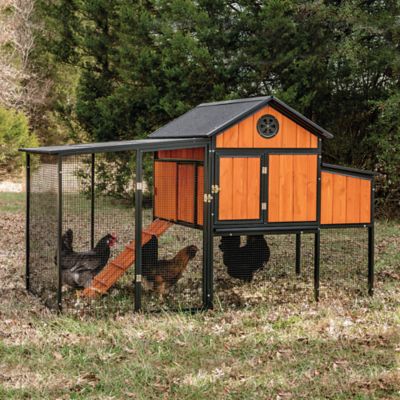
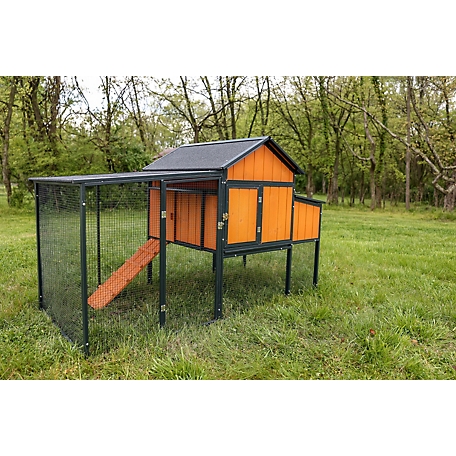
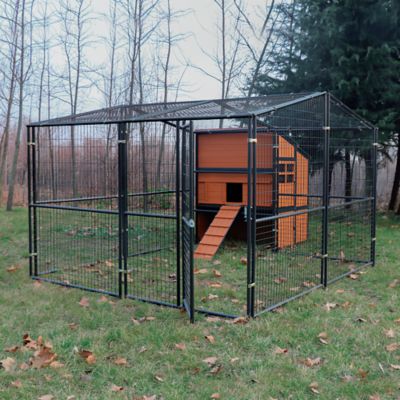
by Larry
Assembly was fairly simple–watching a You-Tube video helps as a visual aid.
by Angeline
It’s pretty great & sturdy. I will say if you want it to last & hold for a long time, you will have to screw or glue parts together because they will snap back out easily with the slightest force.
by Jynny
We had our wooden coop disintegrate in a year and a half being outside in the rain (yet shaded). I did not want to spend more money on another throwaway wooden coop and I’ve been wanting this coop for so long. 2 of my survivor chickens sleep in the wooden coop, but I’m hoping I can get them to transition to this coop with our new chicks. It is sturdy plastic and it’s going to last like those Little playhouses my kids had. It even came with enough carabiner clips for each lock spot. The droppings trays slide out for easy cleaning. It has 2 nest boxes on each side, one side is the little door, and one side is the pull out trays so you’ll need space on all sides. Now as far as how many chickens will fit….I wouldn’t put more than 9 regular sized hens in here. Bantams could fit more, maybe 12? I’m still pleased with it though and if we get more than the 9 chicks that will be using it, I would definitely buy another one of these.
by Vine
Easy to assemble and well worth the money.